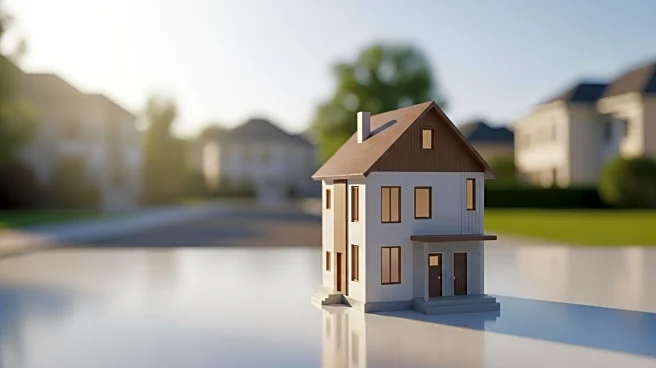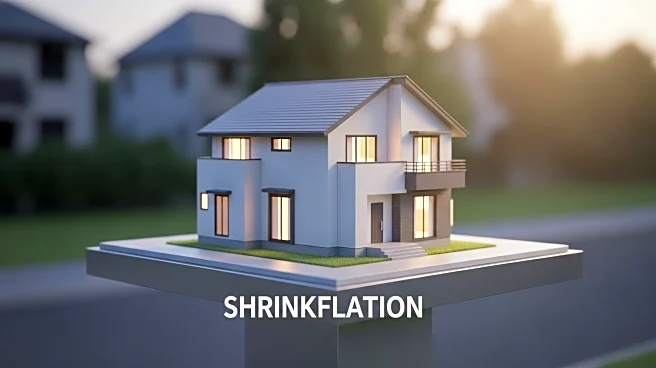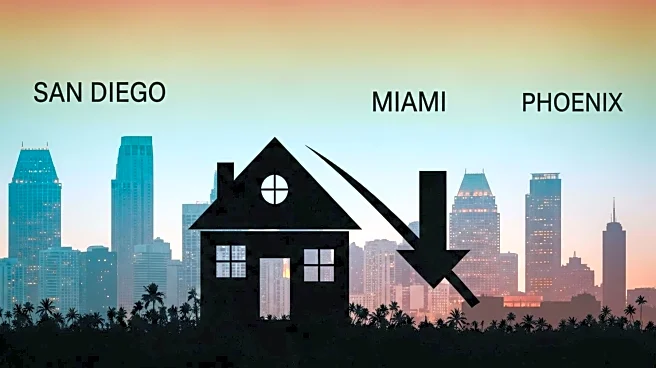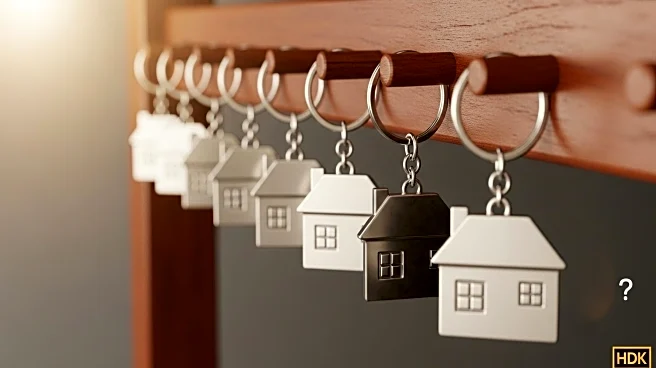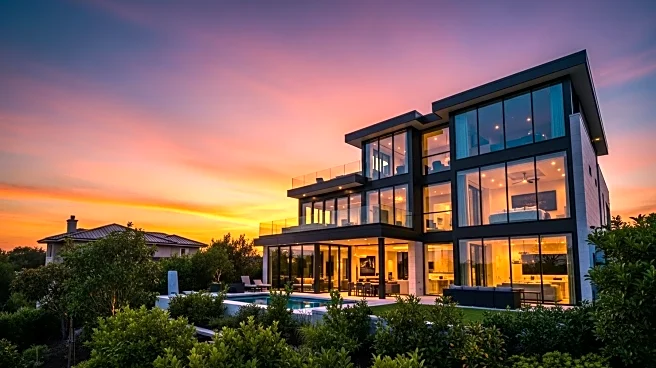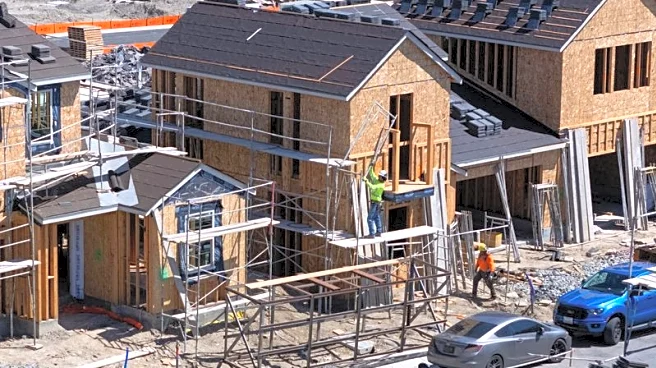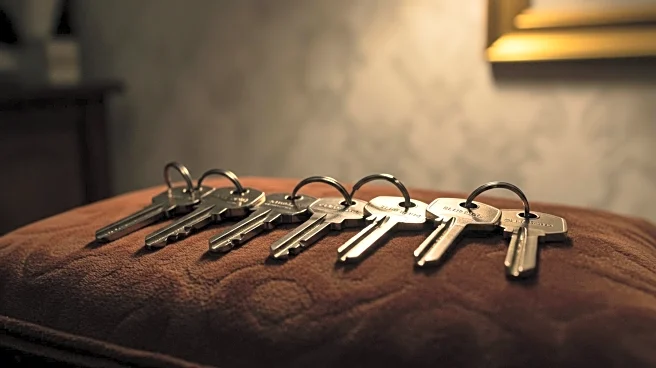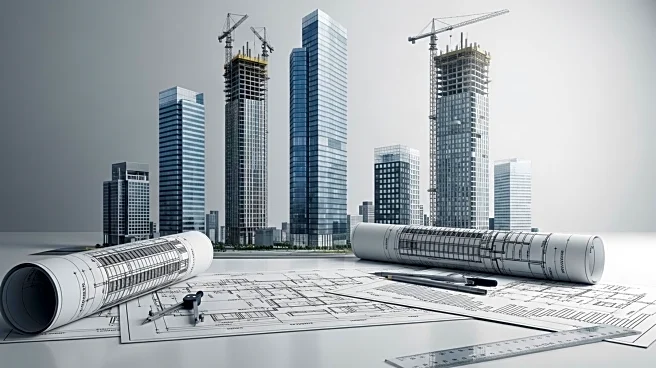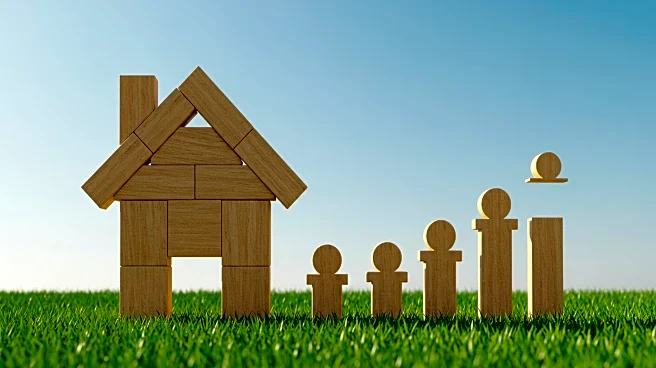What is the story about?
What's Happening?
The housing market is experiencing a trend known as shrinkflation, where the size of new single-family homes has decreased by 11% over the past decade, while the price per square foot has increased by 74%. Builders are designing compact floor plans by cutting hallways and bedrooms to make homes more affordable. However, this downsizing trend poses a risk for homeowners who may outgrow their homes before reaching the breakeven point. The trend is particularly challenging for first-time buyers and growing families, forcing them to stay in homes that no longer meet their needs. The squeeze is most intense in regions like the South, where new homes have shrunk the most, and in the West, where prices have more than doubled per square foot.
Why It's Important?
The shift towards smaller homes at higher prices is reshaping the concept of starter homes, making them less of a temporary step and more of a long-term residence for families. This trend could have significant implications for the housing market, particularly for first-time homebuyers and growing families who may find themselves stuck in homes that no longer suit their needs due to extended breakeven timelines and high costs. The combination of shrinkflation and extended breakeven timelines is creating challenges for buyers, potentially affecting their financial stability and mobility.
What's Next?
Homebuyers may need to hold on to their homes for as long as 10 years before breaking even, compared to the previous rule of five years. This extended timeline could influence future buying decisions and market dynamics, as potential buyers may reconsider purchasing smaller homes at higher prices. Builders and policymakers may need to address these challenges to ensure the housing market remains accessible and affordable for all.
AI Generated Content
Do you find this article useful?
